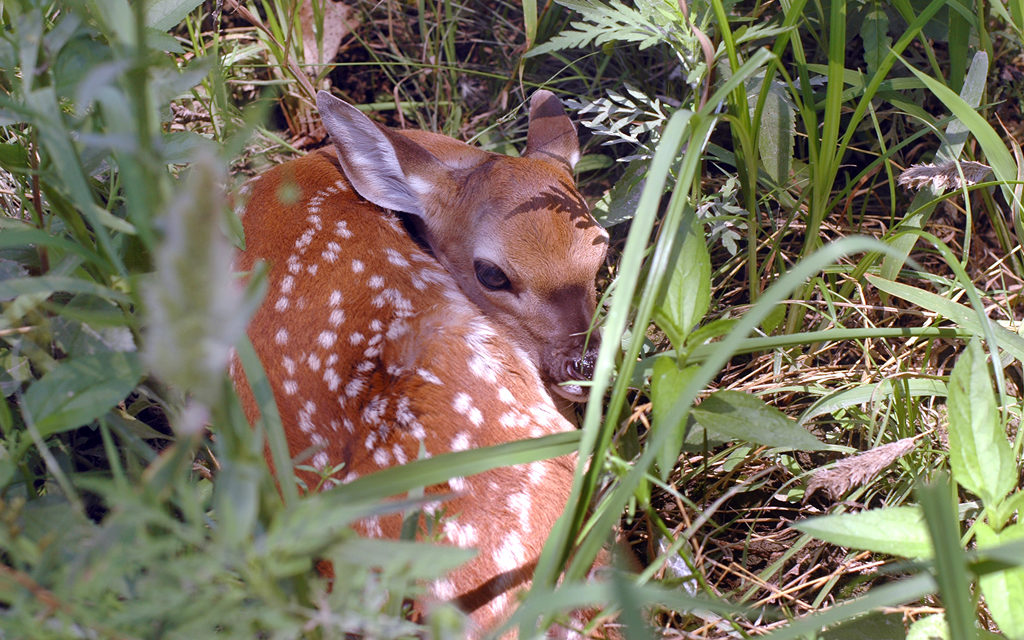THIS FAWN’S MOTHER LEFT IT HIDDEN IN WEEDS where its spots would help camouflage it. The mother is usually not far away, although you may not see her. Don’t touch or disturb it. (Photo by John Jefferson)
By John Jefferson
Ya know what time it is?
It’s fawning time for whitetail does, and the little fawns have already started hitting the ground.
Most of you already know better, but every year, some uninformed person with good intentions will see a fawn bedded down in a patch of weeds without its mother in sight and decides the little guy has been abandoned or forgotten.
Worse, still, that person will either call Animal Rescue or Parks & Wildlife and waste their time OR try to pick up the fawn and carry it to what they think is a safer place.
That’s a classic example of two wrongs not making a right. First, in all probability, the fawn was not at all abandoned. Does are better mothers than that. She’s usually not far away and either getting a well-needed rest from the stress of motherhood or browsing for sustenance to help provide milk for her newborn.
Fawns have a high demand for milk and the mother has carried its baby during the winter when vegetation and browse are in short supply and may not be fit enough to fill the needs of this hungry, little, growing waif.
Fawns begin to nurse almost immediately after birth and need the mother’s milk for growth as well as for the antibodies that help protect it from disease.
Data from Alan Cain, TPWD’s Whitetail Deer Program Leader, shows Texas has about 4.3 million deer. Roughly 2.4 million of them are does, and 92% of them are bred each year.
Most have twin fawns, but younger does often have singles. Triplets are rare – only about 2% incidence. Statistics in 2016 indicated Texas had 960,000 fawns in the population.
If you try to apply percentages to population estimates, it won’t compute, since fawn survival plays a huge factor. Cain estimates survival is around 40%. That means better than half the fawns born don’t make it past their first birthday. A number of factors are responsible.
It’s said that Texas weather is a continuous drought, occasionally interrupted by a severe thunderstorm and a flash flood. Those droughts occur most often during the summer, when a majority of the fawns are being born. And droughts do double damage to fawns.
First, they retard all vegetation, including the high weeds that does hide their newborn in, making them more vulnerable to predators like coyotes, bobcats, mountain lions, hogs, eagles, domestic dogs … and a few of the people mentioned in the third paragraph, above.
If fawns survive those, they are still dependent upon mother’s milk, and if momma can’t get enough to eat during a drought, they both suffer. Often, one or more of the fawns dies during extreme droughts.
It’s a rough life being born a fawn. Nature can be cruel.
Cain expects the fawn crop to be a little lower than average in South Texas, the Rolling Plains and parts of the Cross Timbers, since those areas are somewhat dry.
So, do your part. Leave ‘em alone! Don’t touch!
JJ





